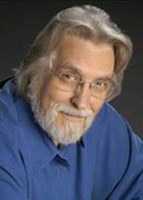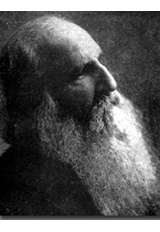“Conversations with God”, “Seth”, “Afterlife Teaching”, “ACIM”: - Same Teaching?
Posted on 31 May 2012, 15:57
On my bookshelves I have Neale Donald Walsch’s (below) Conversations with God, my Afterlife Teaching from Stephen the Martyr (of course), Jane Roberts’ Seth Speaks, Pat Rodegast’s Emmanuel, Gita Mallasz’s Talking with Angels, and Helen Schucman’s and William Thetford’s A Course in Miracles.

The author of Conversations with God in the early 1990s “suffered a series of crushing blows — a fire that destroyed all of his belongings, the break-up of his marriage, and a or a car accident that left him with a broken neck. Once recovered, but alone and unemployed, he was forced to live in a tent in Jackson Hot Springs, just outside Ashland, Oregon, collecting and recycling aluminium cans in order to eat. At the time, he thought his life had come to an end. Despondent, he began his writings after working his way out of homelessness, and following a stint as a radio talk show host”.
With regard to Conversations with God, a Wikipedia article presented the following as highlights, and noted ways in which the teaching of Conversations is not new:
• Souls reincarnate to eventually experience God-realization ([Hinduism]/’ ‘Bhagavad-Gita/Sikhism).
• Feelings are more important as a source of guidance than intellect (Rousseau).
• We are not here to learn anything new but to remember what we already know (Hinduism/Plato).
• Physical reality is an illusion (Hinduism/ Sikhism/Buddhism’s concept of maya).[Physicist David Bohm et al.]
• One cannot understand one thing unless he or she understands its opposite (Tao Te Ching).
• God is everything. (Hinduism / Spinoza / Brahman)
• God is self-experiential, in that it is the nature of the Universe to experience itself. (Hinduism/Hegel, and process theology as first outlined by Alfred North Whitehead)
• God is not fear-inducing or vengeful, only our parental projections onto God are. Fear or love are the two basic alternative perspectives on life (Drewermann)
• Good and evil do not exist (as absolutes, but can exist in a different context and for different reasons as Nietzsche).
• Reality is a representation created by will. (Schopenhauer)
• Nobody knowingly desires evil. (Socrates)\
I believe it a valid generalisation to suggest that all or most of these points can also be detected in Afterlife Teaching, the Emmanuel Book, Talking with Angels, and A Course in Miracles. (To justify that generalisation I would need to write, instead of a blog, a large book with many quotations and footnotes.)
Each set of channelled teachings bears a similar witness to the nature of things. Yet the various channelled materials have very unlike origins.
Gita Mallasz’s (below) book has its origin in the group of Hungarian Jewish women who were to meet their deaths in a Nazi concentration camp. There is an inspiring story of the lengths they went to save about 100 Jews. In their extremity they met together in a state of surrender to Spirit, and received the guidance contained in Talking with Angels. Helen Dallos was the channel. The dialogues in Hungarian were transcribed onto notebooks] during a series of 88 events, from June 25, 1943 to November 23, 1944. They have been published altogether in 18 languages.

I found myself talking to Stephen the Martyr, through the mediumship of Thomas Ashman, after many preparatory experiences, and not so long after a strong experience of surrender to Christ, or to Spirit. Although Stephen’s teaching has so much in common with Conversations, it is presented from the point of view of a follower of Jesus who had been killed 2000 years ago, and is reinterpreting the main Christian teachings in terms of his experience of reality.
It seems to be suggested that the bulky volume of teaching called A Course in Miracles was dictated to Helen Schucman (below) by Jesus. She wrote the teaching down with the help of William Thetford. The book describes a purely non-dualistic philosophy of forgiveness and includes what are meant to be practical lessons and applications for the practice of forgiveness in one’s daily life. The introduction to the book contains the following summary, “Nothing real can be threatened. Nothing unreal exists. Herein lies the peace of God.

Jane Roberts (below (May 8, 1929 – September 5, 1984) was an American author, poet, psychic and spirit medium. In late 1963, Roberts and her husband, Robert F. Butts, experimented with a Ouija board as part of Roberts’ research for a book on extra-sensory perception. According to Roberts and Butts, on December 2, 1963 they began to receive coherent messages from a male personality who eventually identified himself as Seth. Soon after, Roberts reported that she was hearing the messages in her head. She began to dictate the messages instead of using the Ouija board, and she eventually abandoned the board.

“Pat’s journey as the channel for the spirit Emmanuel began in 1969. While working as a secretary for a publishing company and raising three teenagers, Pat (below) began practicing Transcendental Meditation (TM). Her intent was to quiet her mind. Her experience was unique from the start as she began to see inner visions. Over the period of time, those visions evolved into clear guidance in the form of images from an ever-present light; a light who eventually introduced himself as her spirit guide named Emmanuel.”

How can we summarise the teaching of all these Communicators? What in general is their purpose? A possible answer would be, To help us to the awareness that we are conscious participants in the universe; or help us develop cosmic consciousness. Cosmic consciousness was I think first described by Richard Maurice Bucke. (Below)

It was 1901, and not long before his death, that R. M. Bucke published his Cosmic Consciousness, which reached a wide readership for the rest of the century. He described this consciousness like this: “Along with the consciousness of the cosmos there occurs an intellectual enlightenment or illumination which alone would place the individual on the new plane of existence – would make him almost a member of a new species. To this is added in a state of moral exhortation, an indescribable feeling of innovation and joyousness, and a quickening of the moral sense, which is fully as striking and more important both to the individual and to the race than is the enhanced intellectual power. With these come, what may be called a sense of immortality, a consciousness of eternal life, not a conviction that he shall have this, but the consciousness that he has it already.”
Bucke examines the lives of a number of great human beings who he believes had this consciousness: Gautama, the Buddha, Jesus the Christ, Plotinus, Mohammed, Francis Bacon, Jacob Behman, William Blake, Honore de Balzac, Edward Carpenter, Emanuel Swedenborg, William Wordsworth and so on. If we study the teachings of the Communicators that have been mentioned, we will find described in detail much that pertains to this consciousness, but we shall see very clearly that it is attainable not only by spiritual giants but by the ordinary person. It appears that this consciousness is often suddenly attained by experiencing a Near Death Experience – how it happens, differs from individual to individual.
It may interest readers to read these Wikipedia articles:
Conversations with God
Talking with Angels
Seth
Afterlife Teaching
A Course in Miracles
Pat Rodegast: Emmanuel
Richard Maurice Bucke
It will be noted how shamelessly I have quoted from these articles. In forthcoming blogs I am hoping to compare what Conversations with God, Afterlife Teaching, and A Course in Miracles have to say about the list of topics attached to my notes on Conversations with God. I confine myself to these three, as it is these that attempt to describe spiritual reality.
Afterlife Teaching From Stephen the Martyr by Michael Cocks is published by White Crow Books and available from Amazon and other bookstores.
Paperback Kindle

Next blog, June 12
http://whitecrowbooks.com/blogs
|